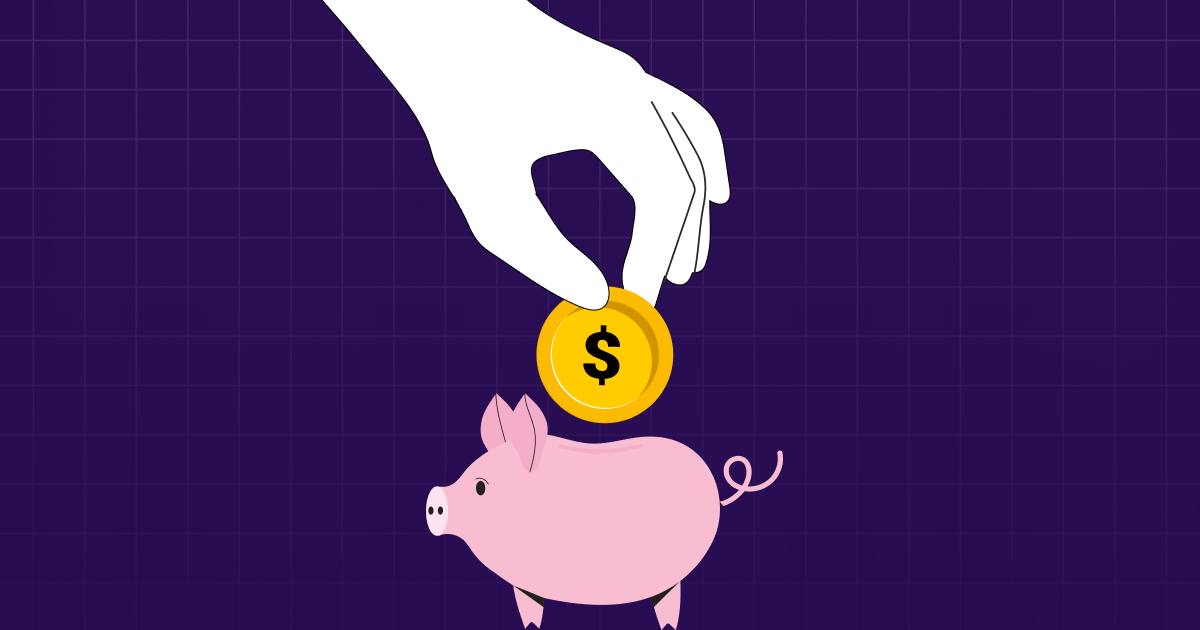
Have you ever made a New Year’s resolution to save more money but ended up breaking it two weeks into February? Don’t worry. You’re not alone. All of us know what we need to do– save money, but we aren’t sure about how we can do it. Maybe a few handy and actionable tips on how to save money will help you here.
10 Effective Ways to Save Money on Your Wallet
1. Automate monthly transfers to your savings account
This is one of the easiest methods to save money. Set up automatic transfers every month from your checking account to your savings account. This allows your savings to grow without any additional effort on your part. This doesn’t have to be a big amount. Even 10% of your earnings set aside as savings right at the beginning of the month will make a huge difference.
You can file a standing request (SI) form with your bank or do it through your banking app to automate transfers. Even ₹10,000 ($120) set aside every month can help you save upto ₹120,000 ($1500) a year.
2. Cancel subscriptions that you don’t use regularly
Automatic subscriptions are bleeding money from your savings as we speak. And there’s a good chance that you’ve got at least a few of those set up right now. Netflix, Amazon Prime, Spotify Premium, your gym membership, maybe more.
To spot the subscriptions that need to go, look through your last three months’ bank statements for the auto-debit transactions. Single out the subscriptions and ask yourself how much you’ve used them in this period. If your answer isn’t “Regularly,” you know what you need to do.
3. Cut down on energy costs
It’d blow your mind if we told you how much you can save on your electricity bill by making a few minor changes. To start with, take shorter showers (not fewer, you still need to be clean) and fix any leaks. You can also install LED lights in your house. They’re more expensive, but they make up for it in the long run. An average Indian household could save about ₹3,000 a year simply by switching to LED lighting.
4. Minimize eating out or ordering in
We’re all guilty of eating out when we could be cooking at home. This is one of the easiest things to cut down on, and it’ll be a huge money-saver, too. You can get a week’s worth of groceries with the money you’d spend on two meals at a restaurant. That isn’t to say you need to completely stop eating out.
You deserve a treat once in a while. But be a little smart to find and use coupons for your favorite restaurants. Even a credit card that rewards restaurant spending could come in handy. A little disclaimer there would be to treat credit cards with caution and avoid using them to spend on anything that you can’t buy in cash.
5. Pay off high-interest loans
Debt repayments are a huge burden on you and your monthly budget, especially high-interest debts. Try to pay these off using the avalanche method. The avalanche method is where you pay your loans, starting from the one with the highest interest. You pay each one as fast as you can and then put that additional money towards the next debt payment/or invest.
6. Prepare for grocery shopping
Before you head out to buy your groceries for the month, check your pantry and cupboard, and make a list of the things you really need. This will help you avoid impulse purchases as you walk down those tempting aisles at the supermarket.
You can also start couponing and even join your local store’s loyalty program for those additional rewards and discounts. Apart from those things, use a cashback credit card for 5-6% cashback on your purchases. Again, make sure you can pay off these debts on time every month to avoid paying interest and additional fees.
7. Plan out major purchases
You can save quite a bit by simply planning ahead and timing major purchases like vehicles, household appliances, and electronics. Plan these big expenses for annual price-drop periods. Black Friday’s coming up later this month so look out for those big discounts, especially on electronics.
If you can’t wait for annual price drops, you can always track prices online using tools like Camelizer, which tracks product prices on the Amazon website and notifies you when prices drop. You can also use the Honey extension to find relevant coupons that can save you even more money.
8. Keep savings in high-yield accounts
You always need to be on the lookout for the best interest rates available. Ideally, this interest rate must be higher than the annual rate of inflation. But with regular savings accounts, the interest rates that banks offer don’t even beat inflation. If you are looking for something with a high-interest rate, check out Mudrex Vault. It offers up to 10% annual interest.
9. Turn off notifications from retailers
It’s only natural to click on a notification announcing a sale. But the thing is, you probably don’t even need the thing that is on sale. You end up buying it simply because there is a sale going on. One way to deal with this impulse is to prevent it from occurring in the first place. Turn off emails and app notifications from retailers. This will end up saving you a good chunk of money in the long run.
10. Create a 50-30-20 budget
This might be last on the list, but it isn’t any less important than the other tips. The 50-30-20 budget might be the best thing you do when it comes to money management.
The 50-30-20 budgeting method assigns 50% of your earnings to your needs– the absolute necessities like rent, food, and water. 30% to your wants– the stuff you could do without but you’d prefer to have, like eating out, new shoes, etc. And the remaining 20% of your earnings is allocated to savings and investing.
It’s important to have an emergency fund before you start investing, though. An emergency fund is basically 6 months’ worth of ‘living’ (things you can’t do without) expenses. You keep this in case you’re out of work temporarily or if there’s a medical emergency.
If all that is taken care of and you are looking to invest, check out Mudrex Coin Sets, crypto baskets based on specific themes.
Conclusion
Savings is a necessity more than a luxury. You never know when you’ll need money to deal with an unexpected emergency. And in those cases, savings will be your safety net. Creating wealth is all about disciplined savings. No amount of money is too small when it comes to savings. As long as you have a plan and stick to it, you’ll be able to achieve all your financial goals.
FAQs
1. What are some everyday money-saving strategies?
There are a few simple things you can do to save money on a daily basis.
- Make a list when you go grocery shopping to prevent impulse purchases
- Turn off notifications on retail and food delivery apps
- Prepare your meals at home as often as you can
2. How can I save money for an emergency fund?
Follow the 50-30-20 budgeting rule. According to it, 50% of your earnings should go towards your needs– food, water, shelter. 30% towards your wants– eating out, buying new clothes, etc and the last 20% of your earnings need to be set aside for savings. When you’ve saved up enough to afford 6 months of ‘living’ expenses, you’ve created an emergency fund for yourself.
3. What are some good ways to save money every month?
You can follow a few simple tips to save money on a monthly basis
- Automate monthly transfers to your savings account from your checking account
- Cancel subscriptions to services that you do not use regularly
- Open a high-interest savings account
- Budgeting according to the 50-30-20 rule will go a long way in helping you save





